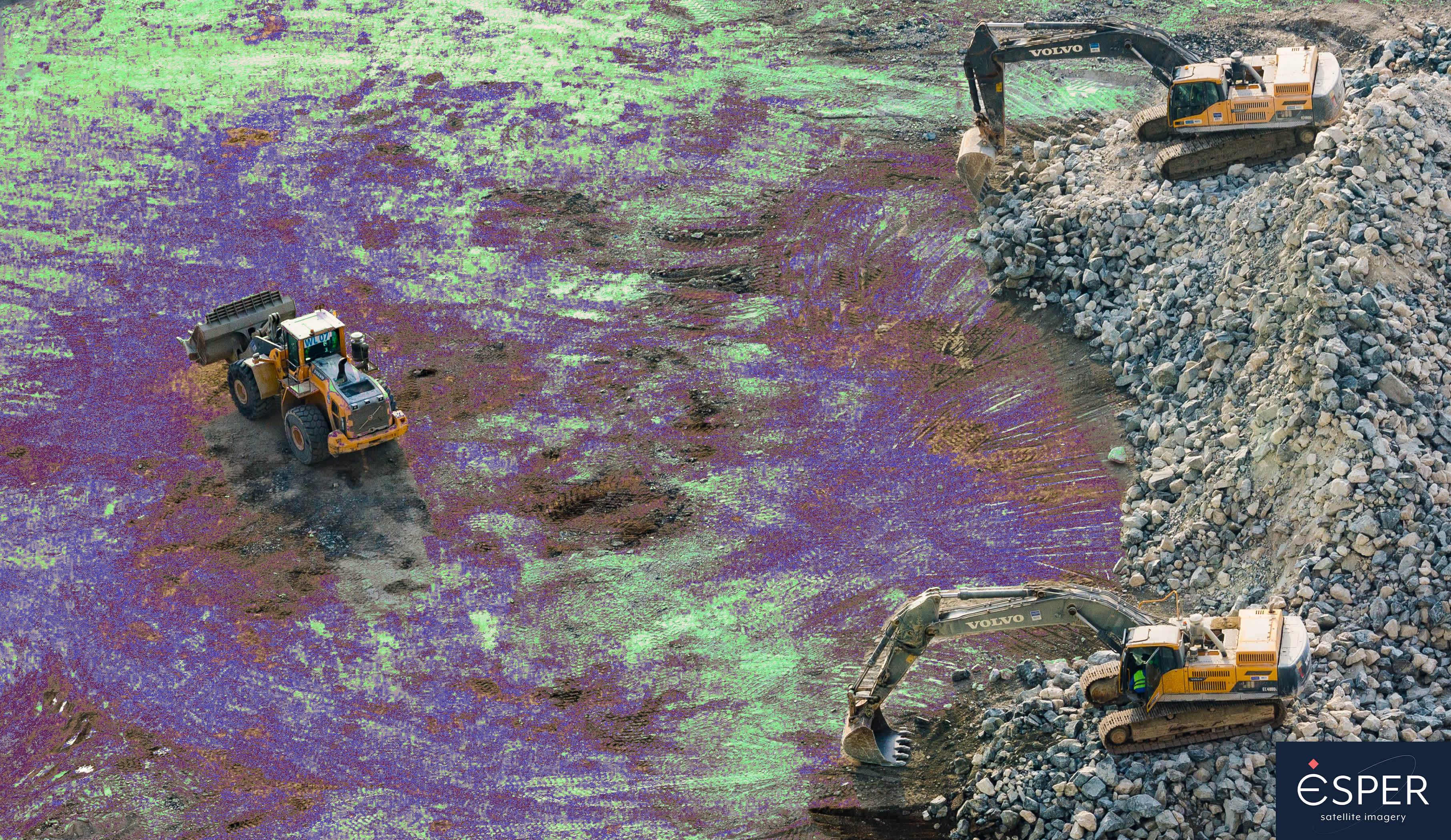
Responsible Extraction of Critical Minerals with Hyperspectral Imagery
The last article talked about the effects of mining and the need for the industry to shift towards sustainable practices. This is even more urgent today as we are in an era marked by rapid technological advancements.
There is an urgent global push towards sustainable energy solutions as the demand for critical minerals has reached unprecedented levels. These essential elements, such as lithium, cobalt, graphite, and rare earth minerals are indispensable for producing renewable energy technologies, electric vehicles, advanced electronics, and countless other high-tech applications. As the world increasingly relies on these critical minerals, the mining industry finds itself at the forefront of a new era, facing both tremendous opportunities and significant challenges.
Critical Minerals and its Vital Importance
Critical minerals are a specific group of minerals that play a crucial role in various industries and technologies, particularly those related to clean energy, advanced manufacturing, and digital technologies. These minerals are deemed critical due to their high economic importance, limited availability, and potential risks associated with their supply chain. They are essential for the production of renewable energy systems, energy storage technologies, electric vehicles, aerospace components, advanced electronics, and other emerging technologies.
Examples of critical minerals include lithium, cobalt, graphite, indium, vanadium, and platinum group metals. These minerals possess unique properties that are difficult to substitute, making them vital for the development and sustainability of key industries.
The growing demand for critical minerals, driven by the transition towards clean energy and the digital revolution, has raised concerns about their availability and the potential geopolitical and environmental implications of their extraction. Critical minerals play a vital role and their importance stems from several key factors:
Clean Energy Transition: Critical minerals are integral to the development of solar panels, wind turbines, and energy storage systems, enabling the generation, storage, and distribution of clean energy. Without critical minerals like lithium, cobalt, and rare earth elements, the widespread adoption of renewable energy sources would be significantly hindered.
Advanced Manufacturing and Electronics: These minerals are essential for advanced manufacturing processes and the production of high-tech electronics. They are used in the manufacturing of semiconductors, magnets, catalysts, and various electronic components. Critical minerals enable the miniaturization, efficiency, and performance improvements of electronic devices, contributing to advancements in telecommunications, computing, transportation, and healthcare.
Electric Vehicles (EVs): They are vital components of electric vehicle batteries, electric motors, and charging infrastructure. Lithium-ion batteries, which rely on critical minerals like lithium, cobalt, and nickel, power the majority of electric vehicles on the market. The expansion of the EV industry and the transition towards sustainable transportation depend heavily on the availability of these minerals.
Technological Innovation: Critical minerals are at the forefront of technological innovation. They enable advancements in energy storage, telecommunications, robotics, aerospace, medical devices, and other emerging industries. From smartphones to renewable energy systems, critical minerals are the foundation of modern technological progress, driving economic growth, job creation, and societal advancements.
Recognizing the vital importance of critical minerals entails understanding their significant contributions to various industries. Ensuring their sustainable supply, responsible extraction, and efficient use is crucial for fostering a resilient and sustainable future.
Hyperspectral Imagery, EarthTones, and the Road to Sustainability
Hyperspectral imagery plays a crucial role in promoting sustainable mineral extraction by providing valuable information and insights throughout the mining process. EarthTones gives you exactly that.
With EarthTones, access to critical information will help ensure the sustainable extraction of critical minerals in various ways:
Targeted Exploration: EarthTones enables remote sensing of mineral-rich areas by detecting subtle variations in the spectral signatures of rocks and minerals. It helps identify potential mineral deposits and delineate their extent, allowing for more targeted and efficient exploration efforts. By minimizing the need for invasive drilling and unnecessary exploration activities, hyperspectral imagery reduces the environmental footprint of exploration activities.
Environmental Impact Assessment: Before commencing mining operations, it is essential to assess the potential environmental impacts of the project. EarthTones aids in mapping and monitoring the surrounding environment, including vegetation cover, water bodies, and sensitive habitats. It provides valuable baseline data and helps identify environmentally sensitive areas that should be protected or avoided to mitigate the impact on ecosystems and biodiversity.
Mineral Characterization: EarthTones assists in the detailed characterization of minerals within the ore bodies. It helps identify the presence of valuable minerals, as well as associated minerals that may have environmental or economic implications. By understanding the mineral composition, mining operations can optimize their processing methods, minimizing waste generation and maximizing resource recovery. This leads to reduced energy consumption and more sustainable use of resources.
Monitoring and Reclamation: During mining operations, EarthTones can be used for real-time monitoring of environmental changes, such as land disturbances, soil erosion, and water quality. It helps identify areas of concern and enables timely interventions to mitigate and minimize adverse impacts. Additionally, hyperspectral imagery aids in the monitoring of reclamation efforts, ensuring the successful restoration of mined areas to their pre-mining conditions or the establishment of new ecosystems.
By harnessing the power of hyperspectral imagery through EarthTones, mining operations can make informed decisions, minimize environmental impacts, optimize resource utilization, and contribute to the sustainable extraction of critical minerals. It aids in promoting responsible mining practices, reducing the ecological footprint, and preserving ecosystems for the benefit of present and future generations.
We are on the verge of a technological revolution and the demand for these critical minerals will only increase. Stay ahead and secure early access to EarthTones by signing up here.